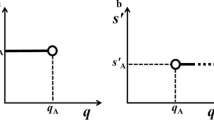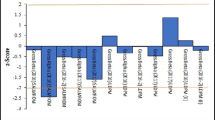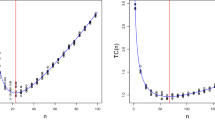Abstract
Data processing of microbial enumeration expressed as colony counts requires the use of specific statistical approaches due to the particular aspect of the analyte and the consideration of the variability related to the growth of microorganisms. A challenging matter in the organization of proficiency testing (PT) schemes for water microbiology is to provide representative, homogeneous and stable enough samples with the aim of assessing participants’ performance but also characterizing the accuracy of measurement. As a consequence, the proficiency testing design may help to make clear distinction between the different sources of variation and facilitate the subsequent error analysis associated with the analytical procedures of the participants. Besides, the statistical tools may be selected to provide explicit outcomes which enable the participants to interpret the data in line with other existing indicators such as those arising from validation studies or measurement uncertainty procedures in the laboratory quality assurance system. In this paper, the suitability of a Poisson–Gamma hierarchical generalized linear model is tested in order to evaluate the interlaboratory error, the batch homogeneity and the repeatability error from water microbiology PT. A probabilistic approach deriving from the negative binomial distribution is proposed for assessing the participating laboratories performance in terms of generalized z-score.



Similar content being viewed by others
References
Niemelä SI (2003) Uncertainty of quantitative determination derived by cultivation of microorganisms. Centre for metrology and accreditation. MIKES Publication J4/2003, Helsinki Finland. ISBN 952-5209-76-8
ISO 29201:2012. Water quality—the variability of test results and the uncertainty of measurement of microbiological enumeration methods. International Organization for Standardization, Geneva
ISO 5725:1994. Accuracy (trueness and precision) of measurement methods and results. Part 2. International Organization for Standardization, Geneva
ISO 5725:1994. Accuracy (trueness and precision) of measurement methods and results. Part 3. International Organization for Standardization, Geneva
Tillett H, Lightfoot N (1995) Quality control in environmental microbiology compared with chemistry: What is homogeneous and what is random? Water Sci Technol 31(5):471–477
ISO 13843:2017. Water quality—requirements for establishing performance characteristics of quantitative microbiological methods. International Organization for Standardization, Geneva
FD T90-465-1:2014. Protocol for estimating the measurement uncertainty associated with an analytical result for microbiological enumeration methods. Part 1: references, definitions and general information. Association Française de Normalisation, Saint-Denis
Jarvis B (2016) Statistical aspects of the microbiological examination of foods. Elsevier, Amsterdam
El-Shaarawi A, Esterby S, Dutka B (1981) Bacterial density in water determined by Poisson or negative binomial distributions. Appl Environ Microbiol 41(1):107–116
McCullagh P, Nelder JA (1989) Generalized linear models. Chapman and Hall, London
Johnson NL, Kotz S, Balakrishnan N (2004) Discrete multivariate distributions. Wiley, Hoboken
FD T90-465-2 (2019) Protocol for estimating the measurement uncertainty associated with an analytical result for microbiological enumeration methods. Part 2: Enumeration techniques. Association Française de Normalisation, Saint-Denis
ISO/IEC 17043:2010. Conformity assessment—general requirements for proficiency testing. International Organization for Standardization, Geneva
ISO 13528:2015. Statistical methods for use in proficiency testing by interlaboratory comparisons. International Organization for Standardization, Geneva
ISO 22117:2019. Microbiology of the food chain—specific requirements and guidance for proficiency testing by interlaboratory comparison. International Organization for Standardization, Geneva
O’Hara RB, Kotze DJ (2010) Do not log-transform count data. Methods Ecol Evol 1:118–122
Marques FJ, Loingeville F (2016) Improved near-exact distributions for the product of independent generalized Gamma random variables. Comput Stat Data Anal 102:55–66
Author information
Authors and Affiliations
Corresponding author
Ethics declarations
Conflict of interest
The authors declare that they have no conflicts of interest.
Additional information
Publisher's Note
Springer Nature remains neutral with regard to jurisdictional claims in published maps and institutional affiliations.
Rights and permissions
About this article
Cite this article
Molinier, O., Guarini, P. Model of uncertainty for the variability of water microbiological enumeration in a proficiency testing scheme. Accred Qual Assur 25, 139–146 (2020). https://doi.org/10.1007/s00769-019-01420-9
Received:
Accepted:
Published:
Issue Date:
DOI: https://doi.org/10.1007/s00769-019-01420-9




